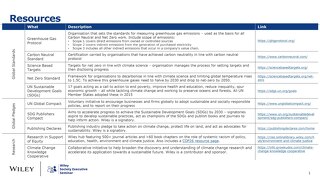transitional-agreements-an-introduction
December 15, 2020
With announcements of new transitional agreements now coming quickly and often from many different publishers, consortia, and societies, transitional agreements are becoming a common feature of the scholarly publishing landscape. But what are they, exactly, and what do they mean for your journals? Here’s what you should know.
 |
| The read element allows authors from eligible institutions full access to all journals published by Wiley, including those published on behalf of our society partners. The publishing elements covers corresponding authors from participating institutions to use funds to publish their article OA – either through OnlineOpen in over 1,500 Wiley subscription journals, or OA in one of our 160+ gold OA journals. |
What is a transitional agreement?
A transitional agreement is when a consortium enters into a partnership with a publisher to enable a large-scale transition towards open access. Transitional agreements allow researchers at participating institutions unlimited read access to a publisher’s portfolio of journals, as well as funding to cover Article Publication Charges (APCs) when choosing to publish OA. Wiley is committed to these large-scale transitions combining both access (read) and publishing.
With each new agreement, are the same items covered?
Each agreement is unique, and you can learn more about each of our transitional agreements in this comparison table. However, there are some common elements:
- Agreements are for a set term
- The agreements combine both read access and open access publishing
- Most include both OnlineOpen in subscription journals as well as gold open access publishing
- Most include a discount on the APC
- They cover research articles and reviews unless otherwise specified (this may also vary by each participating institution covered under the agreement)
The transitional agreements we have in place at Wiley can be broadly categorized into 2 types of agreement:
1. Full and Immediate Transition: combined “publish and read” approach, as shown through the Wiley-Projekt DEAL agreement in Germany. The agreement covers researchers at participating institutions to publish uncapped numbers of articles, whether that is publishing OA via the OnlineOpen option in our subscription journals, or through publication in our gold OA journal portfolio. Researchers are also able to access all content (the read element) published by Wiley.
2. Stepped Transition: investment migrates from read to publish over the contract term, as is the case for Norway, Hungary, Sweden, Finland, and the UK. These agreements also still allow for full access to the Wiley portfolio of journals. However, there is a capped amount of revenue for the migration to OA each annum – if these funds are exhausted due to increased uptake by authors, then funding for OA article publication will cease for the remainder of that calendar year. The OA funds are then reset at the beginning of each new calendar year of the term, allowing OA publication to resume.
What are the benefits of transitional agreements?
While some specifics might change, the aim of each agreement is to help democratize open access publishing for all researchers at participating institutions covered under the consortium. By making it easier for authors to publish OA, you may notice impacts on your journal, such as:
- Increased submissions – As Wiley enters transitional agreements with varying consortia, it may result in increased submissions to your journal from those countries. Each agreement presents an opportunity for growth of high-quality research in your journal, should these articles go on to be accepted.
- Increased readership – Each transitional agreement negotiated by Wiley means that researchers at participating institutions can access and read the content within your journal.
- Subject coverage is broadened – The uptake and availability of OA articles has been limited in research areas that traditionally have not had as much access to APC revenues, such as social sciences, humanities, and some physical science subjects. Transitional agreements are a way to create equity towards OA for all fields of research.
- Compliance with funder mandates – with more funders mandating open access publication, transitional agreements open routes to publishing. For instance, OnlineOpen publication in Wiley subscription journals covered under transitional agreements will be one route to compliance as outlined by the principles of Plan S.
Will transitional agreements change how our journal is published?
We do not expect any editorial policies or standards to change as a result of the transitional agreements that Wiley makes. Journal editors should still apply the same rigor of evaluation and peer review to each article that is submitted, whether or not the article may be covered under a transitional agreement. The relevant agreement will only come into effect for those articles that go on to be accepted.
Are there editorial strategies that help maximize the benefits of transitional agreements?
There are several ways to help journals benefit:
- Commissioning content: to help drive submissions to your journal, content may be commissioned from participating institutions under each agreement. Please speak to your Wiley Journal Publishing Manager on how best to attract content into your journal, through targeted outreach to top authors and/ or leading institutions that publish research in line with your journal’s aims and scopes. It is important to bear in mind that there is no cap to the number of articles published under the Wiley-Projekt DEAL agreement, and commissioning activities can be carried out year-round. However, in the case of other agreements, there are capped revenues (and therefore articles) that can be published in a calendar year. This means that not all authors that publish under Jisc, for instance, will have their APC covered.
- Building and utilizing networks: review your editorial board to ensure there is representation from transitional agreement countries. A diverse editorial board means members can act as champions for relevant agreements and encourage authors to submit to your title. Expanding your pool of reviewers also ensures transitional agreement representation and encourages researchers to submit to your journal if they know the APC is likely to be covered.
- Journal transfer networks: transfer networks help authors to benefit from transitional agreements and get their work published quickly. If your journal doesn’t already participate in a referral network, consider becoming part of one. This can mean either accepting transfers from related journals or referring rejected articles that are out of scope (as long as they are still of sound scientific methodology) to another journal to be considered for publication.
Do transitional agreements impact whether a journal should fully transition to open access?
As Wiley enters into more transitional agreements, you may see more of your journal content becoming open access (depending on the corresponding author country). This may present an opportunity to consider transitioning (flipping) your journal to a fully gold OA model, especially as APCs are covered under the various agreements. However, transitioning to fully gold OA is a big decision, and requires detailed analysis. Speak to your Wiley Journal Publishing Manager if you have questions about the most appropriate strategy for your journal.
More Resources:
See more information for authors on open access. Authors covered under any of Wiley’s transitional agreements can also contact AccountDashboardSupport@wiley.com for help.
Review the full list of participating institutions that are covered in our transitional agreements. The list also includes institutions that have a Wiley Open Access Account (WOAA), which can help cover some, if not all, of the APC for authors.










